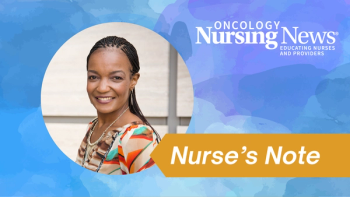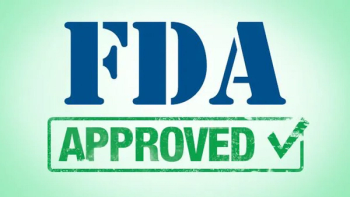
- June 2021
- Volume 15
- Issue 3
COVID-19 and the Rise of Texting in Health Care
The last thing patients want is to be put on hold or interrupted by calls at work.
In business, creative disruption (or innovative disruption) suggests that radical change in a marketplace is brought about by overturning existing conventions. Typically, some type of disturbance, expected or unexpected, occurs to alter the usual pattern of operating or doing business to create a new model.
In health care, a fitting example of this is reflected in how we have conversed with patients during the COVID-19 pandemic, which has migrated from calling to texting. Prior to the crisis, phone calls as the default mode of health care communication were already on the outs. Not surprisingly, only 18% of people say they listen to a voicemail from a number they don’t recognize.1 According to a recent survey of patients’ communication preferences before and during the pandemic, interest in phone calls had plummeted 14% in just a few months.2
For providers and patients in a COVID-19 world, phone calls just weren’t getting the job done as well as they once had, for a variety of reasons. Seventy percent of people experienced longer call wait times than normal when trying to reach a business. Amid a health crisis, the last thing patients want is to be put on hold by their provider or interrupted by calls during the workday.3
All told, things developed to a point where providers couldn’t effectively relay critical information about COVID-19, such as safety and protocols, park-and-wait instructions, and altered practice hours. Similarly, patients couldn’t quickly and easily get the information they needed when they needed it. Both parties were frustrated by the failure of phone calls to facilitate speedy interactions. As a result, it’s easy to see why patient satisfaction with health care communications during the pandemic fell by 7% compared with pre-pandemic figures, according to the communication preferences study.
Creative disruption took place when health care providers realized they already had the solution to their communication ills at their disposal—text messaging. For starters, texting offers a range of advantages over calling.
On average, it takes 4 seconds to send a text message, but a corresponding phone call can last a minimum of 2 minutes, and often much longer. Similarly, the response rate for texts is 209% higher than it is for phone calls, and most text messages are read within 15 minutes.4
By automating scheduling tasks such as text appointment reminders and COVID-19 education messages, providers can connect clearly and effectively with patients while increasing confirmations and decreasing no-shows. Through the use of group texts, providers can message large numbers of patients with important COVID-19 information, details about vaccinations, and the latest health advisories with the click of a button.
Yet health care organizations aren’t the only ones to gain from the transition of patient-provider communications from calls to texts. Patients themselves are fully on board with texting as the new normal. Eighty-one percent of Americans own a smartphone, and 97% send a text at least weekly.5 Clearly, texting has become the preferred way to communicate because it’s quick and convenient, and people can respond to messages. in their own time. And when it comes to patients, text messaging is surging. Nearly 80% of patients in the survey said they wanted to receive text messages from their provider. Another 84% said they preferred automated communication as a faster and more efficient
It’s not just text messaging that is changing the way providers interact with patients. Real- time, 2-way messaging adds a whole new dimension to patient engagement. Through 2-way texting, providers can answer patients’ questions, follow up on no-shows, and conduct a conversation with patients while not over- whelming staff with time-consuming phone calls. According to the patient survey, 73% of patients want to be able to text their medical provider. That communications compatibility is a win-win for health care organizations and those they serve.
Ultimately, the disruption caused by the COVID-19 pandemic has made providers and patients reexamine how they interact and communicate. Texting has become the new way of calling, and its flexibility and efficiency are helping to build upon and improve the patient-provider relationship. Patients feel as though providers are listening better and being more responsive to their needs and preferences. The end result is a better health care experience for patients and improved levels of satisfaction with their provider.
References
- Vanderkam L. Are you still checking voicemail? CBS News. April 11, 2013. Accessed April 19, 2021.
https://www.cbsnews.com/news/are-you-still-checking-voice-mail/ - Patient communication preferences: the COVID-19 impact. SR Health. Accessed April 19, 2021.
https://www.srhealth.com/resources/the-covid-19-impact - Schwab N. New report: COVID-19 reveals the importance of texting during global crises. Zipwhip. April 9, 2020. Accessed April 19, 2021.
https://www.zipwhip.com/blog/coronavirus-business-and-consumer-trends/ - Burke K. Is texting really 10 times more efficient than phone calls? Test Request. September 29, 2015. Accessed April 19, 2021.
https://www.textrequest.com/blog/texting-more-efficient-than-phone-calls - Mobile fact sheet. Pew Research Center. April 7, 2021. Accessed April 19, 2021.
https://www.pewresearch.org/internet/fact-sheet/mobile/#:~:text=mobile%20revolution%20below.-,Mobile%20phone%20ownership%20over%20time,smartphone%20ownership%20conducted%20in%202011
Articles in this issue
over 4 years ago
Continuing Education: June 2021over 4 years ago
Cancer Stigmas Persist, But Nurses Can Helpover 4 years ago
Normalize the Clinical Trial Conversationover 4 years ago
Prescribing Chemotherapy as an NP: Factors to Rememberover 4 years ago
When the Oncology Team Fails the Transgender PatientNewsletter
Knowledge is power. Don’t miss the most recent breakthroughs in cancer care.
















































































